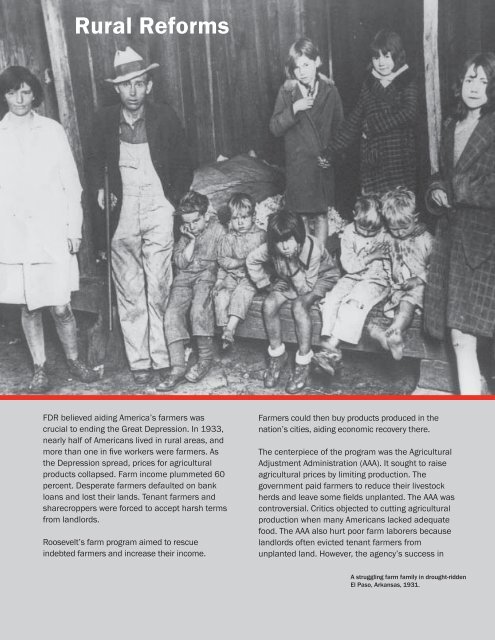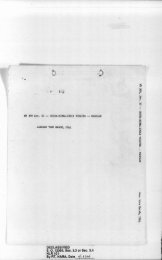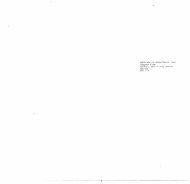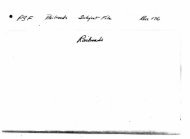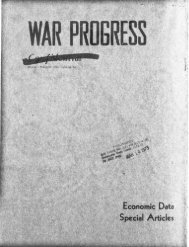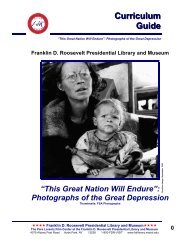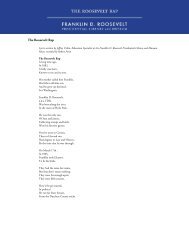100 DAYS Exhibit Guide Modified for Web PDF .indd - Franklin D ...
100 DAYS Exhibit Guide Modified for Web PDF .indd - Franklin D ...
100 DAYS Exhibit Guide Modified for Web PDF .indd - Franklin D ...
Create successful ePaper yourself
Turn your PDF publications into a flip-book with our unique Google optimized e-Paper software.
Rural Re<strong>for</strong>ms<br />
FDR believed aiding America’s farmers was<br />
crucial to ending the Great Depression. In 1933,<br />
nearly half of Americans lived in rural areas, and<br />
more than one in fi ve workers were farmers. As<br />
the Depression spread, prices <strong>for</strong> agricultural<br />
products collapsed. Farm income plummeted 60<br />
percent. Desperate farmers defaulted on bank<br />
loans and lost their lands. Tenant farmers and<br />
sharecroppers were <strong>for</strong>ced to accept harsh terms<br />
from landlords.<br />
Roosevelt’s farm program aimed to rescue<br />
indebted farmers and increase their income.<br />
Farmers could then buy products produced in the<br />
nation’s cities, aiding economic recovery there.<br />
The centerpiece of the program was the Agricultural<br />
Adjustment Administration (AAA). It sought to raise<br />
agricultural prices by limiting production. The<br />
government paid farmers to reduce their livestock<br />
herds and leave some fi elds unplanted. The AAA was<br />
controversial. Critics objected to cutting agricultural<br />
production when many Americans lacked adequate<br />
food. The AAA also hurt poor farm laborers because<br />
landlords often evicted tenant farmers from<br />
unplanted land. However, the agency’s success in<br />
A struggling farm family in drought-ridden<br />
El Paso, Arkansas, 1931.


